
The Enchanting Quebrada de los Cuervos: A Natural Wonder in Uruguay
Discover Quebrada de los Cuervos: Uruguay's hidden natural reserve featuring breathtaking ravines, diverse wildlife, and serene hiking trails.
Quebrada de los Cuervos, located in the Treinta y Tres Department of Uruguay, is a breathtaking natural reserve that captures the essence of unspoiled wilderness. This hidden gem is known for its dramatic ravine, lush greenery, and the serene sounds of nature that make it a perfect escape for nature lovers and adventure seekers alike. The reserve spans over 4,000 hectares and is home to a diverse range of flora and fauna. As you hike through the winding trails, you will encounter a variety of bird species, including the eponymous crows, which give the ravine its name. The trails vary in difficulty, making it accessible for both casual walkers and experienced hikers. One of the highlights is the stunning lookout point that offers panoramic views of the ravine and surrounding landscape. In addition to hiking, Quebrada de los Cuervos offers opportunities for camping and picnicking. The area is well-equipped with amenities, ensuring a comfortable and enjoyable visit. The reserve is also a great spot for photography, with its picturesque scenery providing countless photo opportunities. Whether you're looking to immerse yourself in nature, enjoy a peaceful retreat, or embark on an adventurous hike, Quebrada de los Cuervos has something for everyone.
Local tips in Quebrada de los Cuervos
- Visit during the spring or fall for the best weather and to see the vibrant flora.
- Wear sturdy hiking boots as the trails can be uneven and slippery.
- Bring binoculars for bird watching; the reserve is home to many unique species.
- Pack a picnic and enjoy a meal surrounded by nature at one of the scenic spots.
- Start your hike early in the morning to avoid the midday heat and have more time to explore.
The Enchanting Quebrada de los Cuervos: A Natural Wonder in Uruguay
Quebrada de los Cuervos, located in the Treinta y Tres Department of Uruguay, is a breathtaking natural reserve that captures the essence of unspoiled wilderness. This hidden gem is known for its dramatic ravine, lush greenery, and the serene sounds of nature that make it a perfect escape for nature lovers and adventure seekers alike. The reserve spans over 4,000 hectares and is home to a diverse range of flora and fauna. As you hike through the winding trails, you will encounter a variety of bird species, including the eponymous crows, which give the ravine its name. The trails vary in difficulty, making it accessible for both casual walkers and experienced hikers. One of the highlights is the stunning lookout point that offers panoramic views of the ravine and surrounding landscape. In addition to hiking, Quebrada de los Cuervos offers opportunities for camping and picnicking. The area is well-equipped with amenities, ensuring a comfortable and enjoyable visit. The reserve is also a great spot for photography, with its picturesque scenery providing countless photo opportunities. Whether you're looking to immerse yourself in nature, enjoy a peaceful retreat, or embark on an adventurous hike, Quebrada de los Cuervos has something for everyone.
When is the best time to go to Quebrada de los Cuervos?
Iconic landmarks you can’t miss
Municipal Quebrada de los Cuervos Park
Discover the stunning landscapes, rich biodiversity, and serene atmosphere of the Municipal Quebrada de los Cuervos Park in Treinta y Tres, Uruguay.
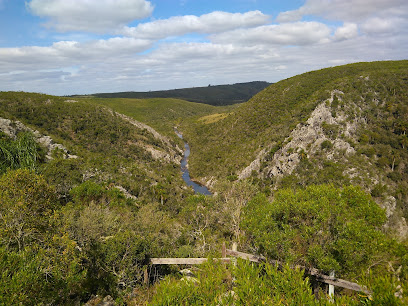
Mirador a la Quebrada de los Cuervos
Discover the stunning vistas of Quebrada de los Cuervos at the Mirador, a breathtaking observation deck in Uruguay's Treinta y Tres Department.
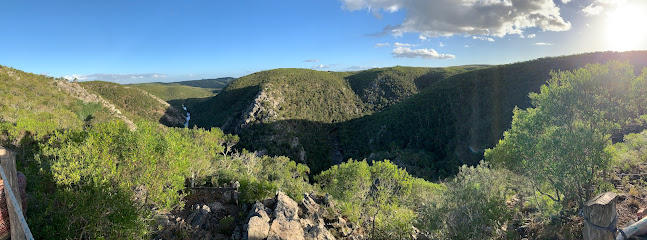
Sendero Quebrada de los Cuervos
Discover the breathtaking landscapes of Quebrada de los Cuervos, a premier hiking destination in Uruguay, ideal for nature lovers and outdoor enthusiasts.

Unmissable attractions to see
Plaza 19 de Abril
Experience the serene beauty and cultural richness of Plaza 19 de Abril, a charming city park in Treinta y Tres, Uruguay, perfect for relaxation and exploration.
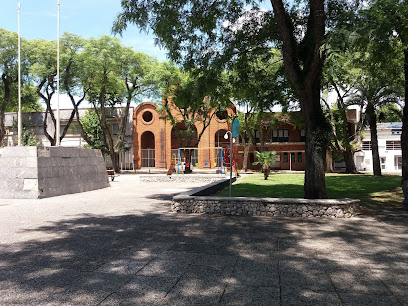
Laguna De Los Cuervos
Discover the tranquil beauty of Laguna De Los Cuervos, a natural oasis perfect for camping, relaxation, and outdoor adventures in Uruguay's Lavalleja Department.
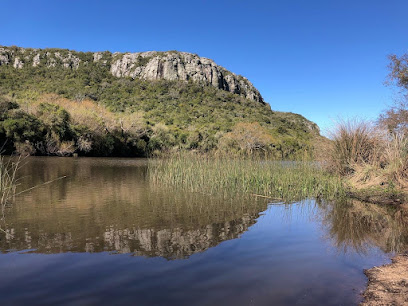
Posta del Chuy
Explore the captivating cultural heritage of Posta del Chuy, a must-visit museum in Cerro Largo, Uruguay, showcasing the region's rich history and traditions.
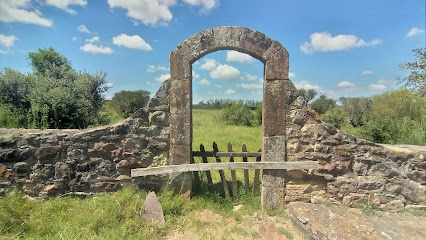
Bio Parque...
Discover the enchanting wildlife at Bio Parque in Melo, where nature and conservation come together for an unforgettable experience.

Parque natural regional Valle del Lunarejo
Explore the stunning landscapes and rich biodiversity of Parque Natural Regional Valle del Lunarejo, a serene escape in the heart of Uruguay's Rivera Department.
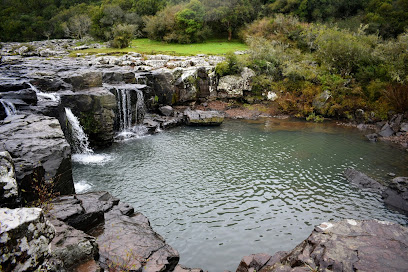
Mirador Panorámico
Discover stunning panoramic views and the serene beauty of Uruguay at Mirador Panorámico, a must-see tourist attraction in Cerro Largo Department.
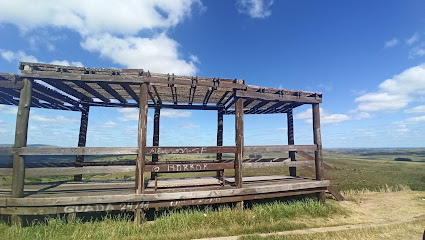
LA YEGUADA Park
Discover LA YEGUADA Park: The perfect natural retreat for camping, hiking, and enjoying Uruguay's breathtaking landscapes.
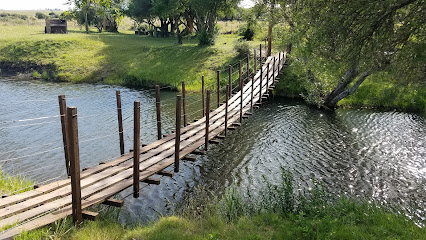
Museo Histórico Regional de Melo
Uncover the stories of Melo's past at Museo Histórico Regional de Melo, a captivating museum that highlights the rich heritage of Cerro Largo, Uruguay.
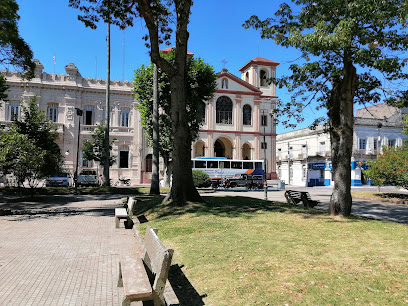
Letrero del Olimar
Explore the Letrero del Olimar, a vibrant cultural landmark in Uruguay showcasing local heritage and stunning natural beauty.
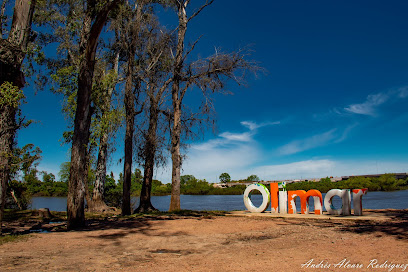
Museo Agustín Araújo
Explore the fascinating history and vibrant art at Museo Agustín Araújo in Treinta y Tres, a must-visit destination for culture enthusiasts.
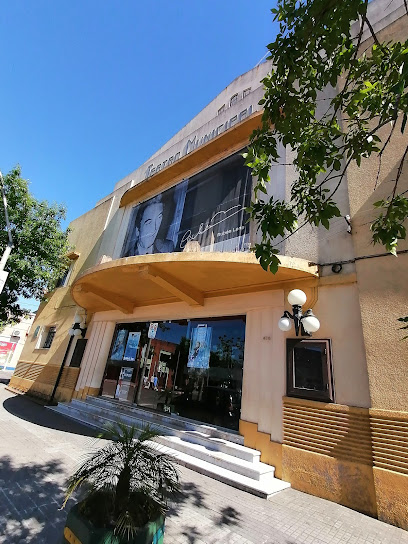
Nacientes del Olimar Park
Explore the serene beauty of Nacientes del Olimar Park, a natural haven in Uruguay perfect for hiking, picnicking, and wildlife observation.

Paso Taborda
Experience the tranquility of Paso Taborda, a serene park in Cerro Largo, Uruguay, perfect for nature lovers and outdoor enthusiasts.
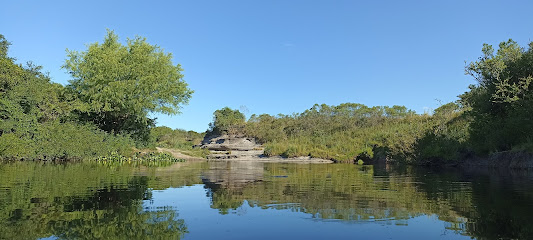
Arco de Treinta y Tres
Experience the majestic Arco de Treinta y Tres, a tribute to Uruguay's heritage, nestled in the vibrant city of Treinta y Tres, perfect for history lovers and travelers alike.
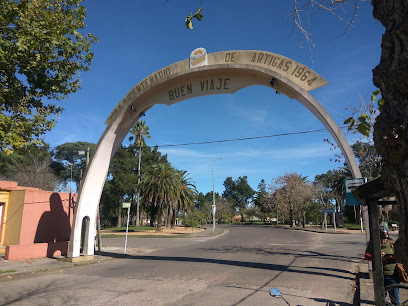
Plaza Wenseslao Silveira
Explore the serene beauty of Plaza Wenseslao Silveira, a tranquil park in Fraile Muerto, perfect for relaxation and local cultural experiences.
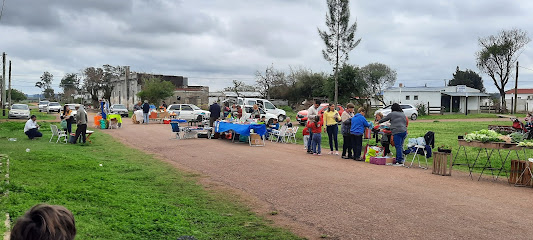
Festival del olimar
Experience the vibrant culture and flavors of Treinta y Tres at the Festival del Olimar, a unique celebration filled with music, food, and local traditions.
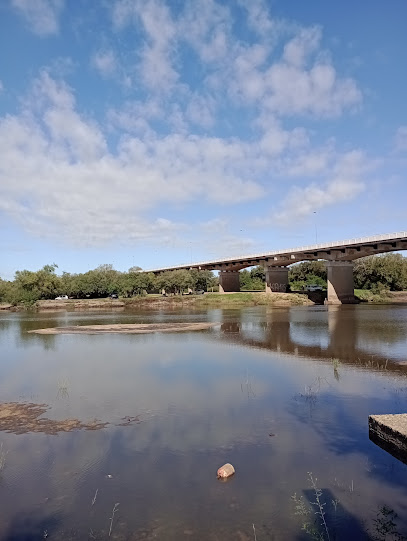
Essential places to dine
La Cocina de Pedro
Experience authentic Uruguayan cuisine at La Cocina de Pedro in Montevideo – where every dish tells a story.
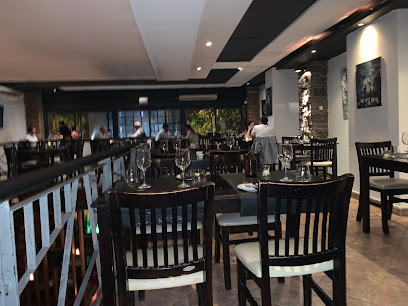
Quebrada de los Cuervos
Experience breathtaking landscapes and diverse wildlife at Quebrada de los Cuervos, a stunning nature preserve in Uruguay's Treinta y Tres Department.
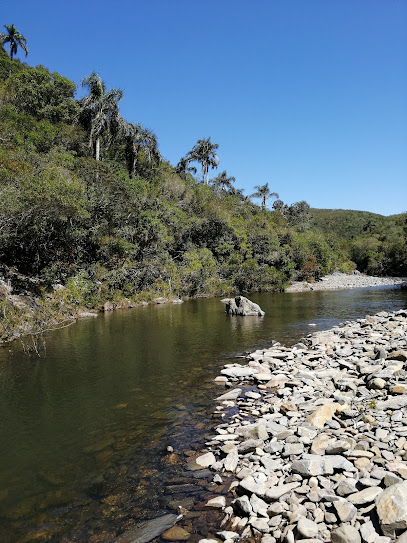
1921 Restaurant
Experience exquisite local cuisine and breathtaking ocean views at 1921 Restaurant in Montevideo.

Restaurante Cuervo
Experience the vibrant flavors of Uruguay at Restaurante Cuervo – where delicious pizzas meet local culinary traditions in Ciudad de la Costa.
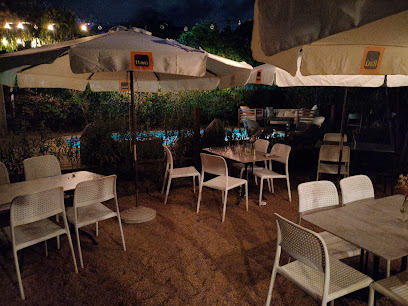
Mirador a la Quebrada de los Cuervos
Experience stunning vistas and natural beauty at Mirador a la Quebrada de los Cuervos – an unforgettable observation deck in Uruguay.
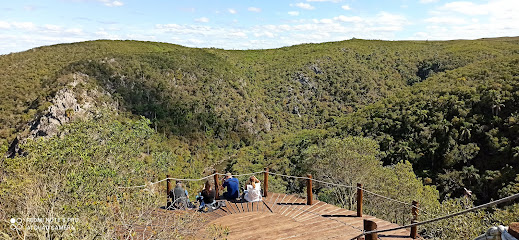
Camping Quebrada de los Cuervos
Experience tranquility at Camping Quebrada de los Cuervos - a serene campground surrounded by breathtaking landscapes in Uruguay's Treinta y Tres Department.
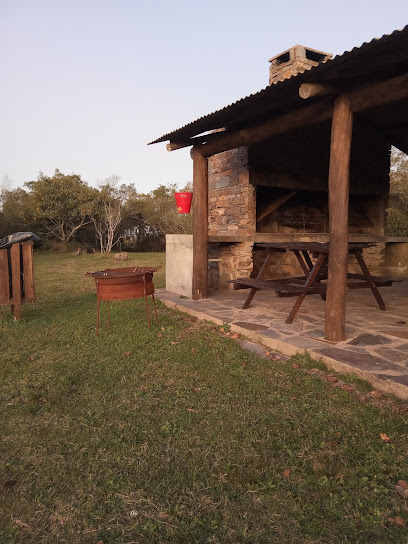
Markets, malls and hidden boutiques
Quebrada de los Cuervos
Explore the stunning landscapes and diverse wildlife of Quebrada de los Cuervos, a nature preserve perfect for outdoor adventures in Uruguay.

Municipal Quebrada de los Cuervos Park
Explore the breathtaking landscapes and rich biodiversity of Municipal Quebrada de los Cuervos Park, a hidden natural paradise in Uruguay.
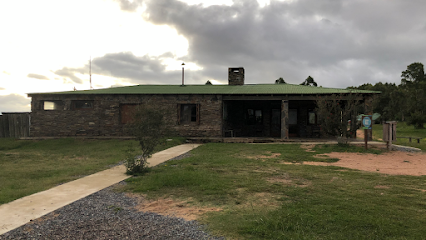
Laguna y Cascada los Olivera
Experience the tranquil beauty of Laguna y Cascada los Olivera, a stunning natural wonder in Treinta y Tres, Uruguay, perfect for relaxation and adventure.
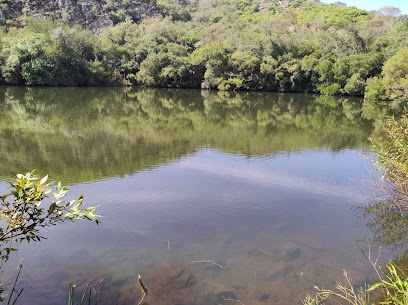
El Convoy
Discover unique Uruguayan crafts and souvenirs at El Convoy, a vibrant store on Ruta 8 in Treinta y Tres, perfect for travelers seeking local treasures.
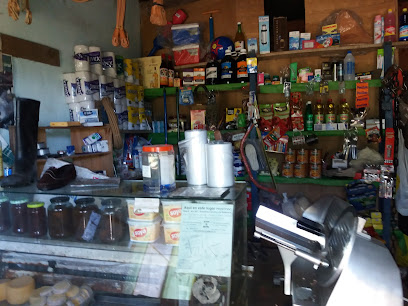
Posta de las Cuervas
Explore the breathtaking landscapes and thrilling outdoor adventures at Posta de las Cuervas in Uruguay's stunning Quebrada de los Cuervas.
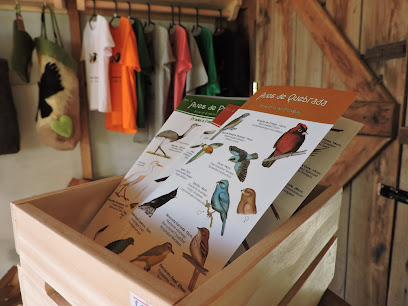
MULTI SHOP 33
Explore Multi Shop 33 in Treinta y Tres for unique gifts and authentic Uruguayan souvenirs that capture the essence of your travel experience.
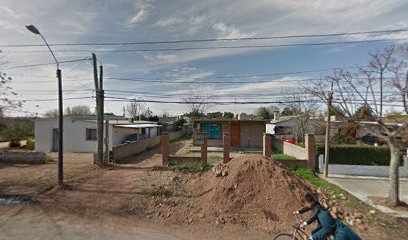
Los Gurises
Discover the vibrant shopping experience at Los Gurises, a local supermarket in Tupambaé offering fresh produce and local delicacies for every traveler.
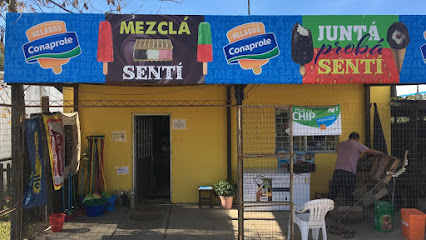
Crazy House
Explore Crazy House in Treinta y Tres for unique clothing and local artisan treasures that capture the essence of Uruguayan culture.
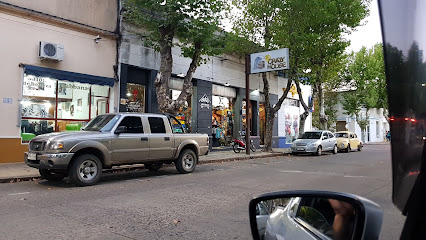
Mirador a la Quebrada de los Cuervos
Discover the breathtaking beauty of nature at Mirador a la Quebrada de los Cuervos, a premier observation deck in Uruguay's stunning Treinta y Tres region.
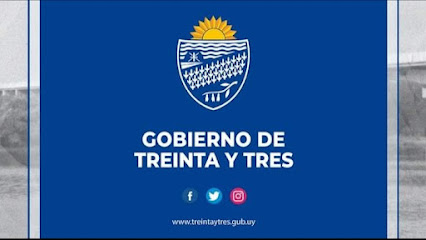
KISSPUL
Discover KISSPUL in Treinta y Tres, where local craftsmanship meets a unique shopping experience, perfect for tourists seeking authentic souvenirs.
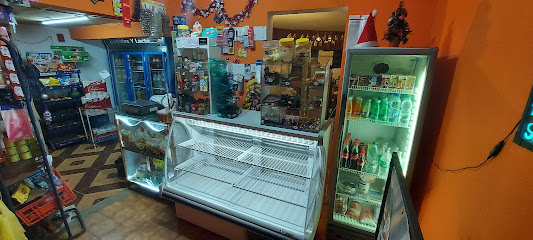
La Cebra - Vestimenta Y Accesorios
Explore La Cebra in Treinta y Tres for unique clothing and accessories that celebrate the spirit of Uruguay, perfect for any fashion lover.
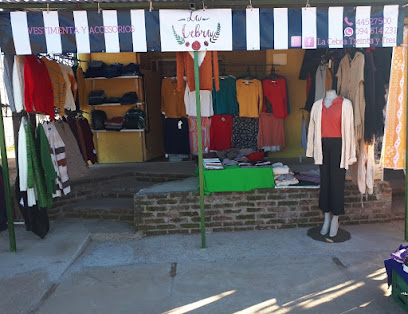
IGLESIA De Los MORMONES ....Fernandez Armejeiras
Explore the serene Iglesia De Los Mormones in Isla Patrulla, a cultural gem blending spirituality and stunning architecture amidst beautiful landscapes.
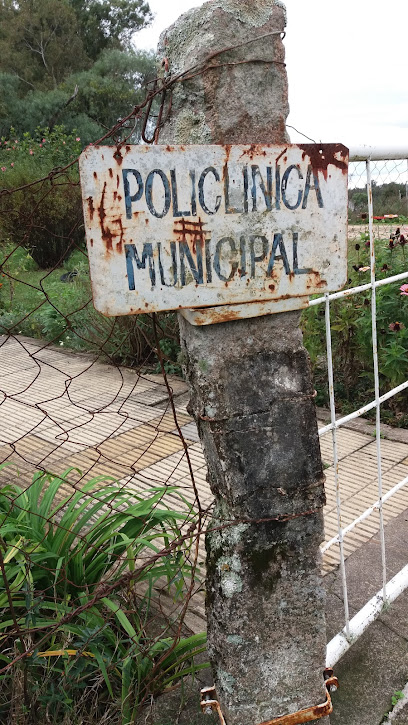
LULA - Tiendita de regalos
Discover unique souvenirs and local crafts at LULA - Tiendita de Regalos in Treinta y Tres, Uruguay, perfect for capturing memories of your visit.
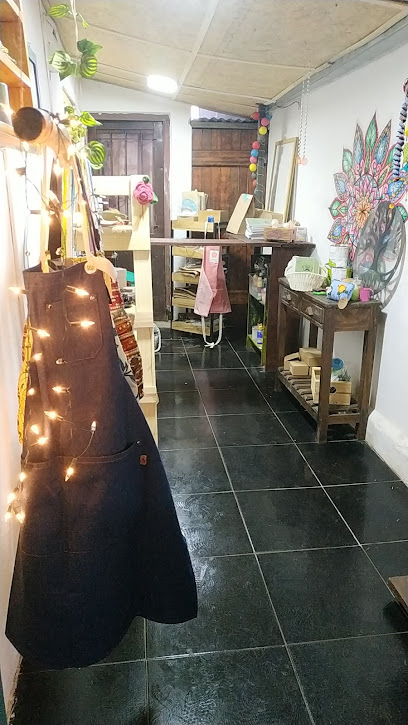
Camping Quebrada de los Cuervos
Experience the breathtaking beauty of Quebrada de los Cuervos, a paradise for nature lovers and outdoor enthusiasts in Uruguay.
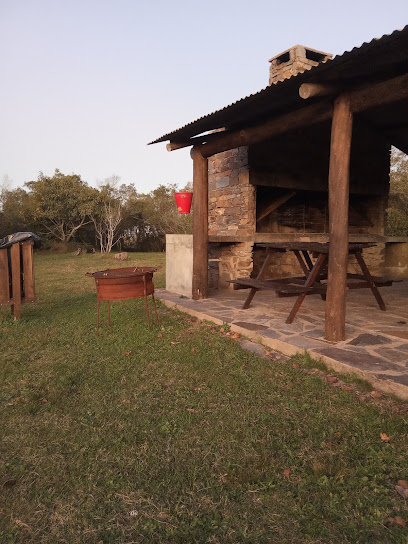
Oírio
Explore the charm of Treinta y Tres at Oírio, your destination for unique gifts and local handicrafts that capture the spirit of Uruguay.

Essential bars & hidden hideouts
Posada El Capricho
Experience the serene beauty of Treinta y Tres at Posada El Capricho, where comfort meets nature in an idyllic setting.

Porfiado Bar
Discover the vibrant nightlife at Porfiado Bar in Treinta y Tres, where great drinks and a lively atmosphere await.
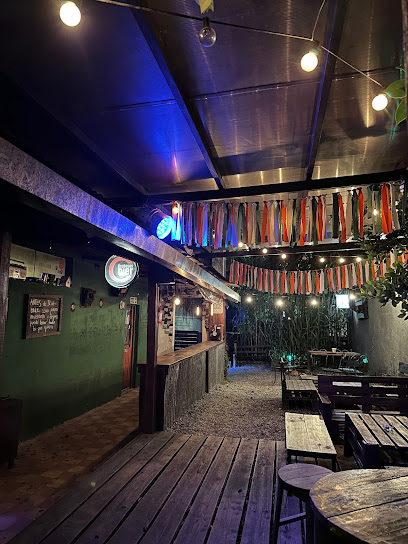
El Kiosko De CARLITOS
Discover El Kiosko De CARLITOS, a cozy bar in Ejido de Treinta y Tres, offering local drinks and a friendly atmosphere for an authentic Uruguayan experience.
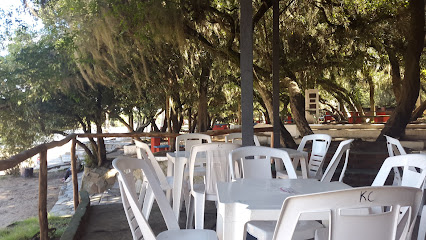
Cabarett El Vasco
Experience vibrant nightlife at Cabarett El Vasco, Villa Sara's premier bar with eclectic music and inviting ambiance.
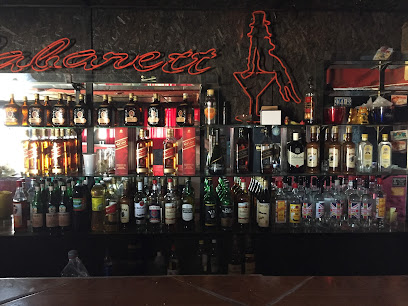
Las Pintas Bar
Discover the vibrant nightlife of Treinta y Tres at Las Pintas Bar, a lively pub offering great drinks and unforgettable late-night experiences.

Los Olivera
Discover local flavors and warm hospitality at Los Olivera, a must-visit restaurant in Isla Patrulla for an authentic Uruguayan dining experience.
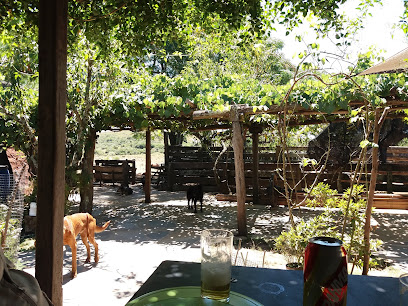
Mirador a la Quebrada de los Cuervos
Discover breathtaking views and rich biodiversity at Mirador a la Quebrada de los Cuervos, a stunning observation deck in Treinta y Tres, Uruguay.

Arem Disco
Discover the vibrant nightlife at Arem Disco in Treinta y Tres, Uruguay, where music and fun blend seamlessly for an unforgettable experience.
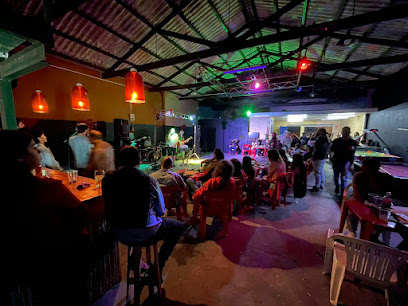
Sabina bar
Discover the vibrant nightlife at Sabina Bar in Treinta y Tres, where friendly vibes and delightful drinks await every visitor.
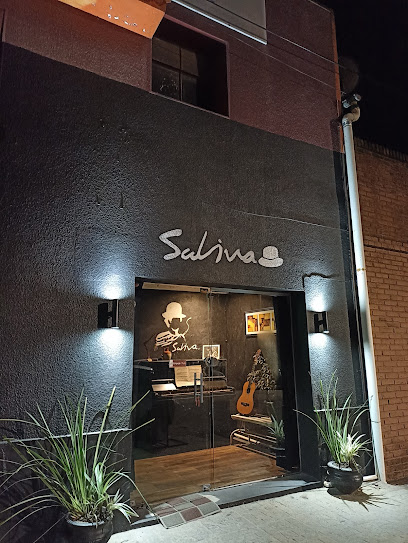
Cocktail 33
Discover the vibrant atmosphere and exquisite cocktails at Cocktail 33, Treinta y Tres' premier bar for a memorable night out.
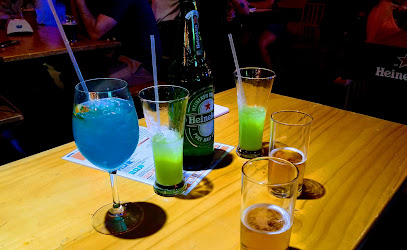
LA QUEBRADA
Discover the exhilarating cliff diving and scenic beauty at La Quebrada, a must-visit bar in Treinta y Tres, Uruguay.
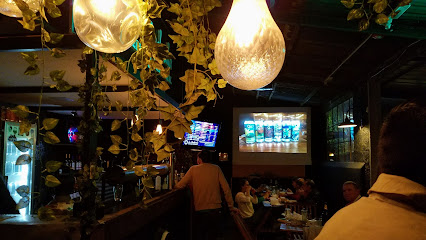
ARBOLITO BAR
Discover the vibrant nightlife at Arbolito Bar, where locals gather to enjoy drinks, music, and a lively atmosphere in Cerro Largo, Uruguay.
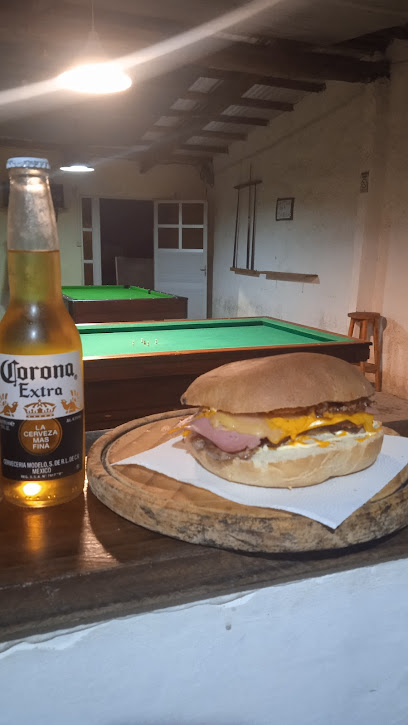
Sendero Quebrada de los Cuervos
Discover the stunning landscapes and rich biodiversity of Sendero Quebrada de los Cuervos, a premier hiking destination in Uruguay's Treinta y Tres Department.

Restobar La Barra
Experience the best of Uruguayan cuisine at Restobar La Barra, a lively gastropub in Fraile Muerto offering fresh flavors and a welcoming atmosphere.

Sarandi del yi
Experience the vibrant nightlife at Sarandi del Yi, a popular bar in Ejido de Treinta y Tres, offering local drinks and live music in a welcoming setting.
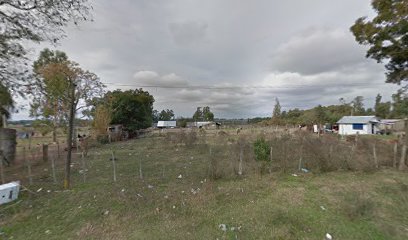
Local Phrases about Quebrada de los Cuervos
-
- HelloHola
[oh-lah] - GoodbyeAdiós
[ah-dee-ohs] - YesSí
[see] - NoNo
[noh] - Please/You're welcomePor favor/De nada
[por fah-vohr/deh nah-dah] - Thank youGracias
[grah-see-ahs] - Excuse me/SorryDisculpe/Perdón
[dees-kool-peh/pehr-dohn] - How are you?¿Cómo estás?
[koh-moh ehs-tahs] - Fine. And you?Bien. ¿Y tú?
[byen. ee too] - Do you speak English?¿Hablas inglés?
[ah-blahs een-glehs] - I don't understandNo entiendo
[noh ehn-tee-ehn-doh]
- HelloHola
-
- I'd like to see the menu, pleaseMe gustaría ver el menú, por favor
[meh goo-stah-ree-ah vehr ehl meh-noo, por fah-vohr] - I don't eat meatNo como carne
[noh koh-moh kahr-neh] - Cheers!¡Salud!
[sah-lood] - I would like to pay, pleaseMe gustaría pagar, por favor
[meh goo-stah-ree-ah pah-gahr, por fah-vohr]
- I'd like to see the menu, pleaseMe gustaría ver el menú, por favor
-
- Help!¡Ayuda!
[ah-yoo-dah] - Go away!¡Vete!
[veh-teh] - Call the Police!¡Llame a la Policía!
[yah-meh ah lah poh-lee-see-ah] - Call a doctor!¡Llame a un médico!
[yah-meh ah oon meh-dee-koh] - I'm lostEstoy perdido
[ehs-toy pehr-dee-doh] - I'm illEstoy enfermo
[ehs-toy ehn-fehr-moh]
- Help!¡Ayuda!
-
- I'd like to buy...Me gustaría comprar...
[meh goo-stah-ree-ah kohm-prahr...] - I'm just lookingSolo estoy mirando
[soh-loh ehs-toy mee-rahn-doh] - How much is it?¿Cuánto cuesta?
[kwan-toh kwehs-tah] - That's too expensiveEsto es demasiado caro
[ehs-toh ehs deh-mah-see-ah-doh kahr-oh] - Can you lower the price?¿Puedes bajar el precio?
[pweh-dehs bah-hahr ehl pree-syoh]
- I'd like to buy...Me gustaría comprar...
-
- What time is it?¿Qué hora es?
[keh oh-rah ehs] - It's one o'clockEs la una
[ehs lah oo-nah] - Half past (10)Media (10)
[meh-dee-ah (diez)] - MorningMañana
[mah-nyah-nah] - AfternoonTarde
[tahr-deh] - EveningNoche
[noh-cheh] - YesterdayAyer
[ah-yehr] - TodayHoy
[oy] - TomorrowMañana
[mah-nyah-nah] - 1Uno
[oo-noh] - 2Dos
[dohs] - 3Tres
[trehs] - 4Cuatro
[kwah-troh] - 5Cinco
[seen-koh] - 6Seis
[says] - 7Siete
[syeh-teh] - 8Ocho
[oh-choh] - 9Nueve
[nweh-veh] - 10Diez
[dyehs]
- What time is it?¿Qué hora es?
-
- Where's a/the...?¿Dónde está un/el...?
[dohn-deh ehs-tah oon/ehl] - What's the address?¿Cuál es la dirección?
[kwal ehs lah dee-rehk-syohn] - Can you show me (on the map)?¿Puedes mostrarme (en el mapa)?
[pweh-dehs mohs-trar-meh (ehn ehl mah-pah)] - When's the next (bus)?¿Cuándo es el próximo (autobús)?
[kwan-doh ehs ehl proh-ksee-moh (ow-toh-booce)] - A ticket (to ....)Un boleto (para ....)
[oon boh-leh-toh (pah-rah)]
- Where's a/the...?¿Dónde está un/el...?
History of Quebrada de los Cuervos
-
Quebrada de los Cuervos, part of the Cuchilla Grande mountain range, was formed millions of years ago through geological processes. The area was originally inhabited by indigenous peoples, including the Charrúa and Minuán tribes, who utilized its natural resources for sustenance and spiritual practices.
-
During the colonial period, the Quebrada de los Cuervos region became a contested area between Spanish and Portuguese forces. The rugged terrain served as a hiding place for various insurgent groups and was a strategic location in the struggle for control over the Banda Oriental territory, which is modern-day Uruguay.
-
In the 19th century, European settlers began to establish farms and small settlements near Quebrada de los Cuervos. The fertile lands and ample water sources made it an ideal location for agriculture and cattle raising, which contributed to the regional economy's growth.
-
Quebrada de los Cuervos played a significant role during the Uruguayan Civil Wars in the 19th century. The natural landscape provided a strategic advantage for various factions, including the Blancos and Colorados, who used the area for guerrilla warfare and as a refuge from enemy forces.
-
In the late 20th century, efforts to preserve Quebrada de los Cuervos' unique biodiversity and natural beauty began to gain momentum. In 1986, the area was declared a Protected Landscape, and later, it achieved National Park status. This designation has helped to conserve its flora and fauna, making it a popular destination for ecotourism.
-
Today, Quebrada de los Cuervos is not only a natural wonder but also a cultural heritage site. It is a symbol of national pride and a testament to Uruguay's rich history. Festivals, guided tours, and educational programs are regularly held to celebrate and promote the area's historical and ecological significance.
Quebrada de los Cuervos Essentials
-
Quebrada de los Cuervos is located in the Treinta y Tres Department of Uruguay. The nearest major city is Treinta y Tres, which serves as the main gateway to the park. The closest international airport is Carrasco International Airport in Montevideo, approximately 300 kilometers away. From Montevideo, you can take a bus to Treinta y Tres, a journey that typically takes around 4 to 5 hours. Once in Treinta y Tres, you can hire a taxi or arrange for a guided tour to take you to Quebrada de los Cuervos.
-
Public transportation options directly to Quebrada de los Cuervos are limited, so it's advisable to rent a car or book a guided tour from Treinta y Tres. Within the natural reserve, the primary mode of transportation is walking. There are well-marked trails for hiking, and some guided tours offer horseback riding as an alternative way to explore the area.
-
The official currency in Uruguay is the Uruguayan Peso (UYU). Credit cards are accepted in most hotels, restaurants, and shops in Treinta y Tres, but it's advisable to carry cash for use in more remote areas, including Quebrada de los Cuervos. ATMs are available in Treinta y Tres, so it is wise to withdraw sufficient cash before heading to the park.
-
Quebrada de los Cuervos is generally a safe destination for tourists. However, like any travel destination, it is advisable to take standard precautions. Avoid walking alone at night in unfamiliar areas and keep an eye on your belongings in crowded places. Treinta y Tres is also considered safe, but always stay vigilant and aware of your surroundings. There are no specific high-crime areas targeting tourists in the Quebrada de los Cuervos region.
-
In case of emergency, dial 911 for immediate assistance. The nearest medical facilities and police station are located in Treinta y Tres. It is recommended to have travel insurance that covers medical emergencies. For minor health issues, there are pharmacies in Treinta y Tres where you can purchase over-the-counter medications. Make sure to carry a basic first aid kit when hiking in Quebrada de los Cuervos.
-
Fashion: Do wear comfortable and durable hiking clothes, including sturdy shoes or boots. Avoid wearing flashy or expensive jewelry. Religion: Do respect local customs and traditions, although there are no specific religious practices tied to the area. Public Transport: Do be respectful and patient if using public transport. Don't expect public transport to be as frequent or timely as in larger cities. Greetings: Do greet people with a friendly 'Hola' or 'Buenos días'. A handshake is also common. Eating & Drinking: Do try local delicacies and accept food offerings graciously. Don’t refuse hospitality, as it is considered impolite.
-
To experience Quebrada de los Cuervos like a local, consider visiting during the off-peak seasons to avoid large crowds. Engage with local guides, as they often have fascinating stories and insights about the area's history and wildlife. Don't miss the chance to explore the various trails, such as the Sendero Panorámico, which offers breathtaking views. Additionally, bring your own reusable water bottle to stay hydrated and reduce waste.
Nearby Cities to Quebrada de los Cuervos
-
Things To Do in Maldonado
-
Things To Do in Punta del Este
-
Things To Do in Montevideo
-
Things To Do in Colonia del Sacramento
-
Things To Do in Fray Bentos
-
Things To Do in La Plata
-
Things To Do in Buenos Aires
-
Things To Do in Rosario
-
Things To Do in Mar del Plata
-
Things To Do in Encarnacion
-
Things To Do in Carmen del Parana
-
Things To Do in Puerto Iguazú
-
Things To Do in Villarrica
-
Things To Do in Florianópolis
-
Things To Do in Foz do Iguaçu







